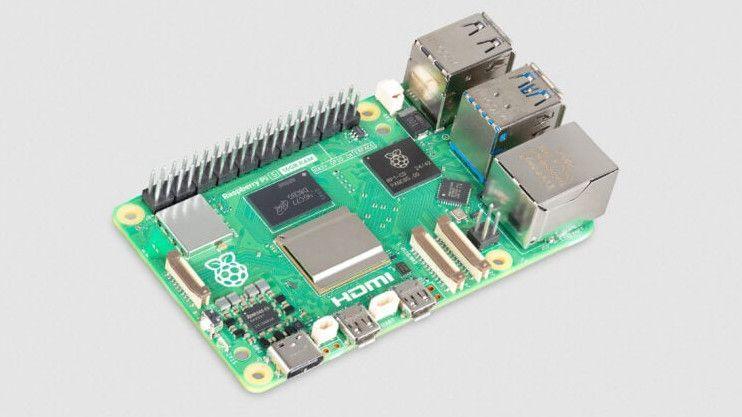- New Raspberry Pi 5 product that doubles the maximum amount of RAM will cost $120 or your regional equivalent
- The expansion is aimed at accommodating increasingly demanding AI workloads
- Alternative should also benefit third-party Linux distribution installations
The 16 GB version of the Raspberry Pi 5 single-board microcomputer is now generally available with Raspberry Pi Carbon Removal Credits, which make it possible to offset the carbon footprint associated with the production and disposal of a Pi product.
Raspberry Pi Foundation CEO Eben Upton announced the product and initiative in a blog post, while the company laid out its carbon removal plan (with purchase options) on a handy landing page.
Upton said the 16GB model was created to address new use cases enabled by a “triple” performance increase from the Pi 4 to 5, such as AI large language models “and computational fluid dynamics, which benefit from having more storage space per core.”
Raspberry Pi 16GB’s capabilities
Upton went on to say that while the Raspberry Pi OS already has low base memory requirements, “heavy” Linux distributions like Ubuntu will benefit from the extra memory. While 2GB to 8GB of RAM may be enough for hobby projects powered by a Pi, 16GB is typically the minimum required for a comfortable desktop experience these days.
Also, Ubuntu is a great Linux distribution for beginners, so I’m glad to hear it’s being featured. The 16GB Pi 5 variant sounds like a great low-cost option for anyone looking to try running a Linux desktop environment for the first time.
While the Pi 5’s Broadcom BCM2712 application processor already supported RAM capacities beyond 8GB, Upton claims that Micron “offers[ing] [the company] a single package containing eight of their 16Gbit LPDDR4X die” is what made a 16GB Pi 5 model possible.
Raspberry Pi’s Carbon Removal Credits program
What’s even better than an already pretty good product reveal is the announcement of a carbon removal program for Pi products.
In the post, Upton acknowledged that despite its small size and light weight, manufacturing, logistics and disposal of Pi devices comes with a “small, up-front carbon footprint.” So now, for just $4 USD or your regional equivalent, through an approved dealer you can purchase a credit that will mitigate that footprint.
To explain how this works, Upton said that “we ordered [decarbonization company] Resident to carry out an independent assessment of the carbon footprint of manufacturing, shipping and disposal of a Raspberry Pi 4 or 5, which came to 6.5 kg of CO₂ equivalent. When you buy a Raspberry Pi Carbon Removal Credit from one of our approved retailers, we pay our friends at UNDO Carbon to start capturing that amount of CO2 from the atmosphere using enhanced rock weathering (ERW) technology.”
He also went into detail about the ERW process, which involves spreading crushed basalt on farmland to safely store carbon inside rocks that form over a matter of decades, thereby removing it from the atmosphere.



